In The Beginning… is a collection of creation stories from around the world, adapted and dramatised for audio as an immersive listening experience for children (and adults!).
About the series
This multi-cultural, multi-voiced, narrated and dramatised series of creation myths and stories from around the world addresses the most profound human questions: Who are we and Why are we here? Adapted for young listeners, the adventures of the powerful gods, mythical creatures and crafty animals that inhabit these ancestral tales provide insights into these deep philosophical questions, as well as celebrating and nurturing a deeper understanding of some of the ancestral cultural traditions and beliefs that are still very much alive today.
The stories
Primal myths and folk tales from across the world have universal themes while the specific features of each story can illuminate and alter our perception of the cultures in which they are rooted, often through metaphor. Through these stories we hope to foster both understanding about and inclusivity.
We acknowledge that telling other people’s stories requires sensitivity and respect. The nature of storytelling is that with each new narrator and each retelling, stories are adapted to connect with the receivers of the tale – many different versions of each story exists as they have been shared and adapted over thousands of years. The creation stories we have selected for this series are integral to the culture, religions and beliefs of the places they are from. Our aim is to both introduce these stories and cultures to new audiences and to recognise and celebrate the cultural traditions in which they are located.
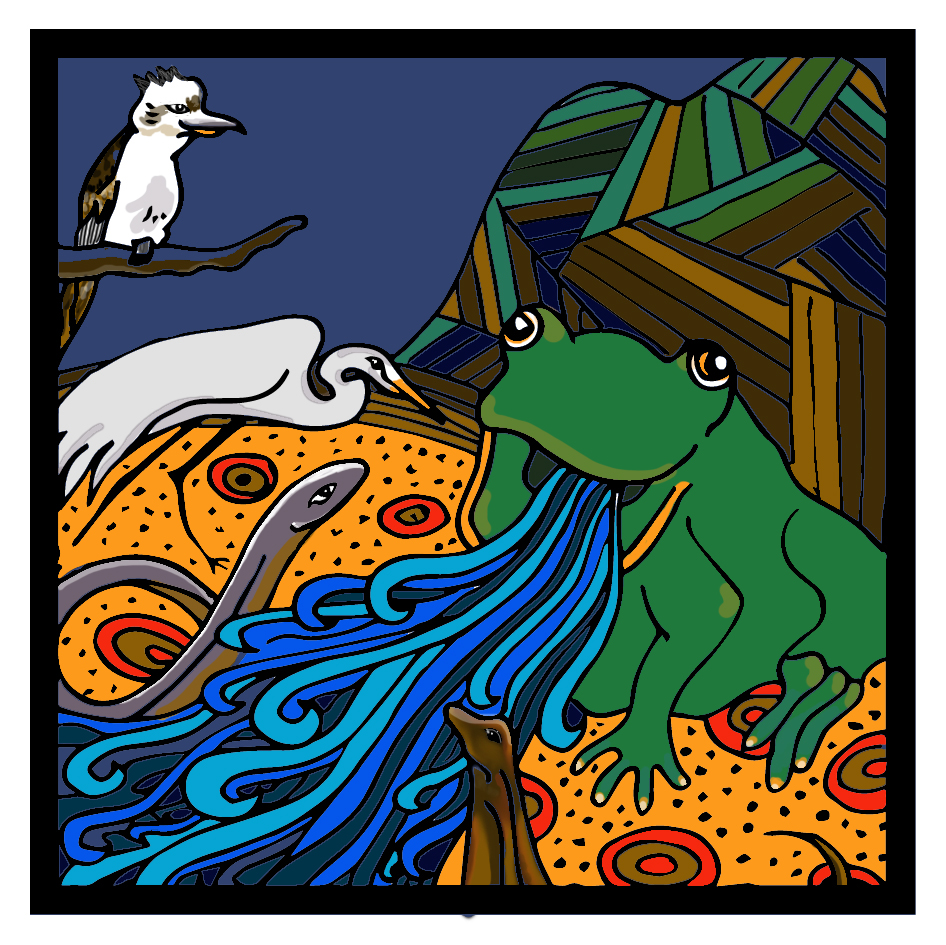
1. The Great Drought (Gunaikurnai – Australia)
This story tells how there was a terrible drought followed by a lethal flood, depicting the natural history of the country going through a turbulent time.
It is from Australia where the First Nations (Aboriginal) people have lived for over 65 thousand years. It was recorded by The Lurtbit Yauung Brataualung clan group.
This is a dreaming story from the Gurnaikurnai people, ‘Tidilick The Frog’, tells of the natural history of the area, with the flood corresponding to a period of change.
There are many Dreaming stories shared by the First Nations people of Australia. The ‘Dreaming’ is First Nations peoples’ understanding of the world and its creation. Passed from generation to generation through storytelling, the Dreaming shares knowledge and beliefs connected to Country and the natural world. It transmits important information about flora, fauna, and laws to obey in order to survive in particular environments. Dreaming stories continue to be shared and strengthened from one generation to the next, connecting each generation to deep knowledge systems that have existed since the beginning of human life.
Incorporating creation, rules for living, social regulations, ethics and morality, these stories often feature characters who demonstrate undesirable behaviours, and face consequences because of it. The Dreaming itself did not take place at the beginning of time but encompasses the past, the present, and the future: it is non-linear. As a holistic philosophy grounded in the very Earth itself, it cannot be assigned to a past people. It is an integrated way of life that many First Nations people believe in and live by today.
Learn more about the Australian First Nations Gunaikurnai and Dreaming stories here
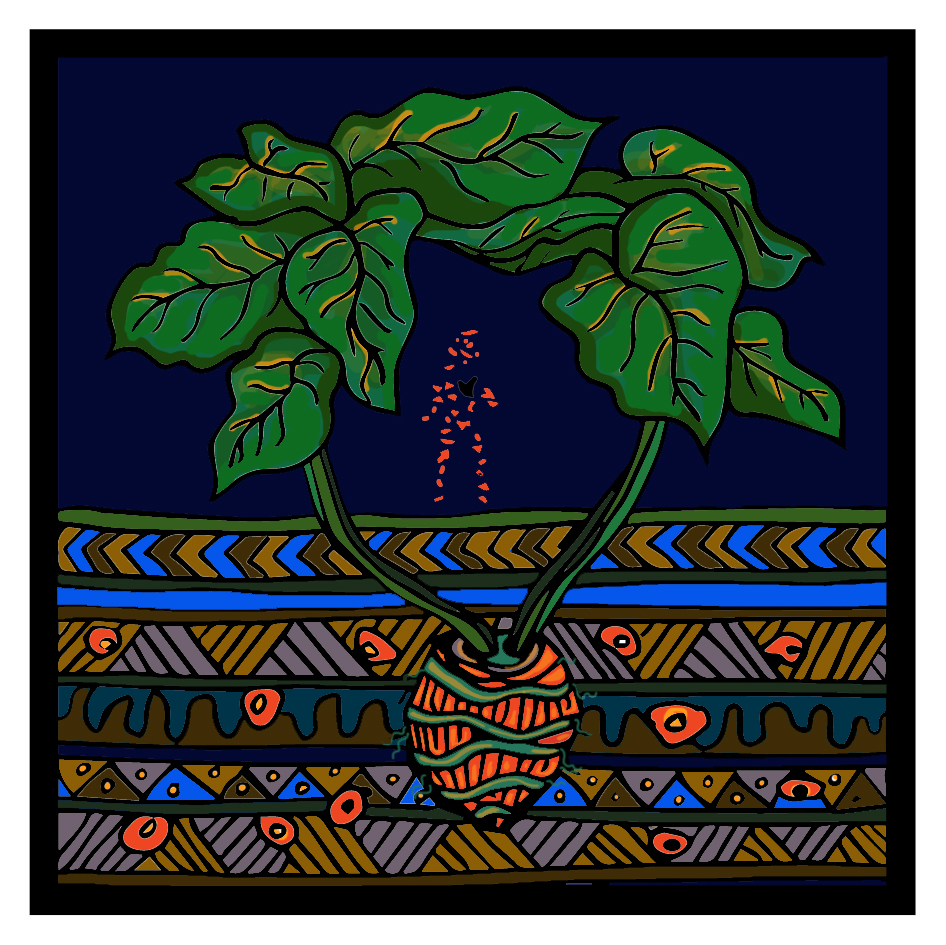
2. Hainuwele The Coconut Girl (Alifuru -Ceram / Indonesia)
In this story we hear where root vegetables (tubars) and root spices came from and how people with good and evil hearts are seperated.
It is told by the Alifuru, Wemale and Alune people on the island of Ceram, located in the centre of the Muluka islands that are now part of Indonesia. They worship many gods, spirits and divine creatures.
Ameta, who appears in this story, is the god who fathered Hainuwele (which means coconut girl), the goddess of fertility. The other goddess who appears in this story is Satene – a goddess who became queen of the dead on the mountain of Salahua where people’s souls go once they died. Spirits can be both good and bad and behave very much like living beings. They are still very much part of life for the people of Ceram and are often seen during rituals (like the Maro festival in this story) or in dreams (like when Ameta is visited regularly by a spirit).
Even though most of the native religion has been destroyed when colonialisation brought both Christian and Islamic beliefs, many of the original customs have been preserved in the local ‘adat’: the unwritten cultural law that still has a strong influence on Ceram society.
Learn more about the indigenous people of Ceram here
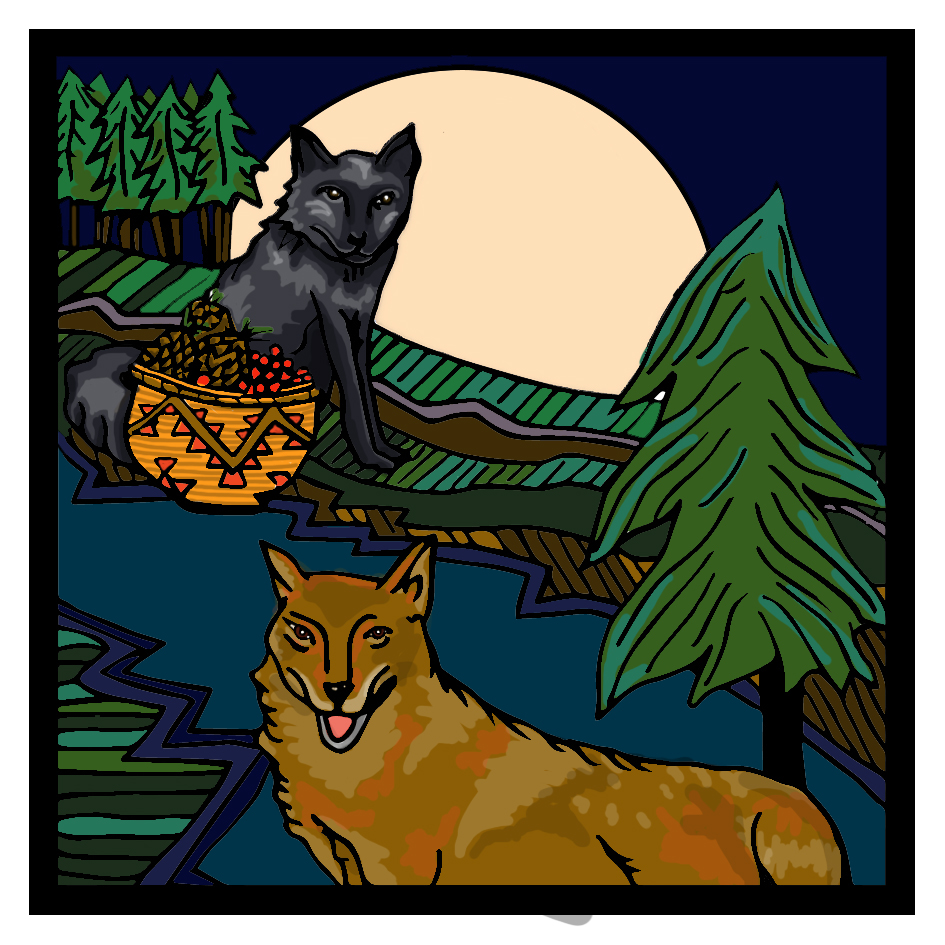
3. Coyote and Silver Fox (Miwok – California/North America)
In this story we learn how the earth is created and how domestic relationships sometimes have to be managed.
It is from the Miwok tribe of indigenous people (also known as Native Americans or American Indians) who have lived in North America for at least 15,000 years (North America and Canada together are called Turtle island by the indigenous people). This tribe is one of many tribes who live in Central and Northern California and they share similar stories with many of their neighbouring tribes. Before colonisation by Europeans their main diet was whatever was good to eat in the forests and rivers, especially berries, roots, fruits and nuts, birds like grouse and rabbits. Storytelling is very important to these tribes as a way of explaining why things exist and why people and animals behave in a certain way. These stories have been told orally from generation to generation and are an important part of Turtle Island culture. They started to be collected and published by European settlers in the 1800’s.
In this story Coyote and Silver Fox represent the first people and even though they are animals they behave just the way people would. Coyote, who features in many stories, is often represented as a trickster who makes frivolous decisions and – as you can hear in this story – he is always hungry. Silver Fox on the other hand, is more serious and wise.
Learn more about the First People of Turtle Island (North America and Canada) here

4. Pangu Creates The World, Nuwa Creates Humans (China)
These two stories from ancient China describe how the world was created and how humans were made.
Today China is the biggest of the Asian countries with the largest population in world. The earliest human settlements in the area we now know as China date back 7000 years. China has been ruled by a number of different dynasties and has an old and rich tradition of legends and myths. The main characters of these stories are gods, goddesses, ghosts and demons. The main themes reflect various aspects of human nature, human relations and social life.
In this story we hear about how the world was first created by Pangu (or Pan’Ku). P’an means the shell of an egg and Ku means solid or secure, referring to Pang Ku being hatched out of chaos. The upper part of the egg formed heaven (Yang) and the lower part formed the earth (Yang). The Yin and Yang symbol represents the idea that all things exist as inseparable and contradictory opposites like light and dark, male and female, old and young.
Pangu is accompanied by three animals who feature in many ancient Chinese stories; the Dragon represents wisdom and power, the Tortoise is a symbol of strength and immortality and in some stories the history of the world is written on its shell, while the Phoenix is a symbol of rebirth.
In the second part of the story we hear about how humans were created by Nuwa (also known as Nu-Kua, Nu-Kwa, Nü-Wa) who was a Chinese Creator Goddess and mother of all humans. Nuwa is often represented as having a fish-like tail.
Learn more about ancient Chinese history here
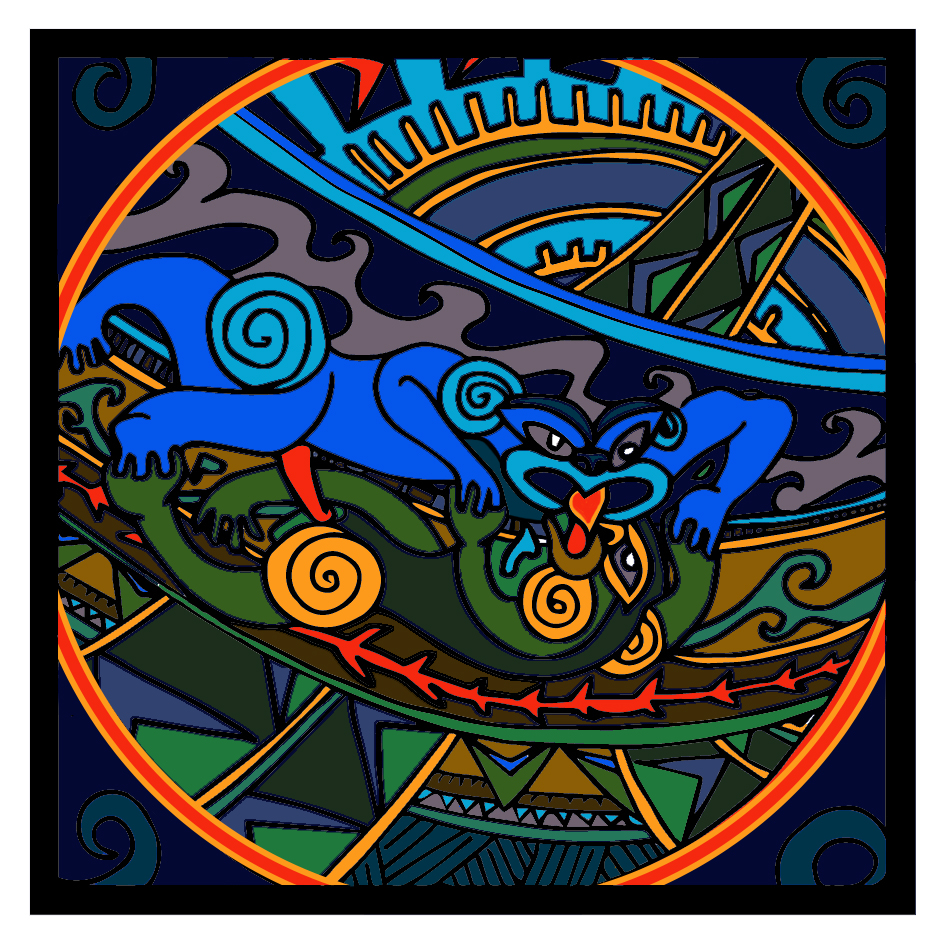
5. The Cosmic Hug (Māori – Aotearoa / New Zealand)
This story from the Māori people explains how the earth and the sky were separated so that light could enable forests and plants to grow, followed by animals and humans.
The ancestors of the Māori people arrived in Aotearoa (translated as land of the thick white cloud) from the Polynesian Islands by boat over 1000 years ago and settled in this new land. They first encountered Europeans in the 1600’s when the Dutch landed onshore, naming the island Nieuw Zeeland after the Dutch province Zeeland. The next Europeans to arrive were the British in 1769 led by Captain Cook initiating the colonisation by the British.
In Māori society there is a long tradition of singing and storytelling. History is passed on through the many stories shared from generation to generation through song, dance and chants. Poetry is also an important part of Māori culture. Tāne (god of the forest) and his brothers (all gods) feature in many stories, where they also represent the different characteristics found in people. The weather has always been very important in Māori life. There are many stories to explain wind, thunder, rainbows and other natural events. Tāne is a figure of great importance in tribal traditions: he fashioned the first human; he adorned the heavens;, and he brought the baskets of knowledge, wisdom and understanding down from the sky to human beings.
In this story we hear about how the earth was created. Rangi (Ranginui) the sky father and Papatua (Papatūānuku) the earth mother are separated from their tight embrace by Tāne and his 69 brothers, allowing light to shine between them and therefore creating the earth. (Tāwhiri) Tāwhirimātea the god of the weather or wind, did not agree with his brothers separation of their mother and father and sent the four winds to bring rain and thunderstorms. The other brothers featured are Tu (Tūmātauenga – angry face), god of war, Whiro, god of darkness and Uru (the first born), god of light.
Learn more about Māori culture and traditions here
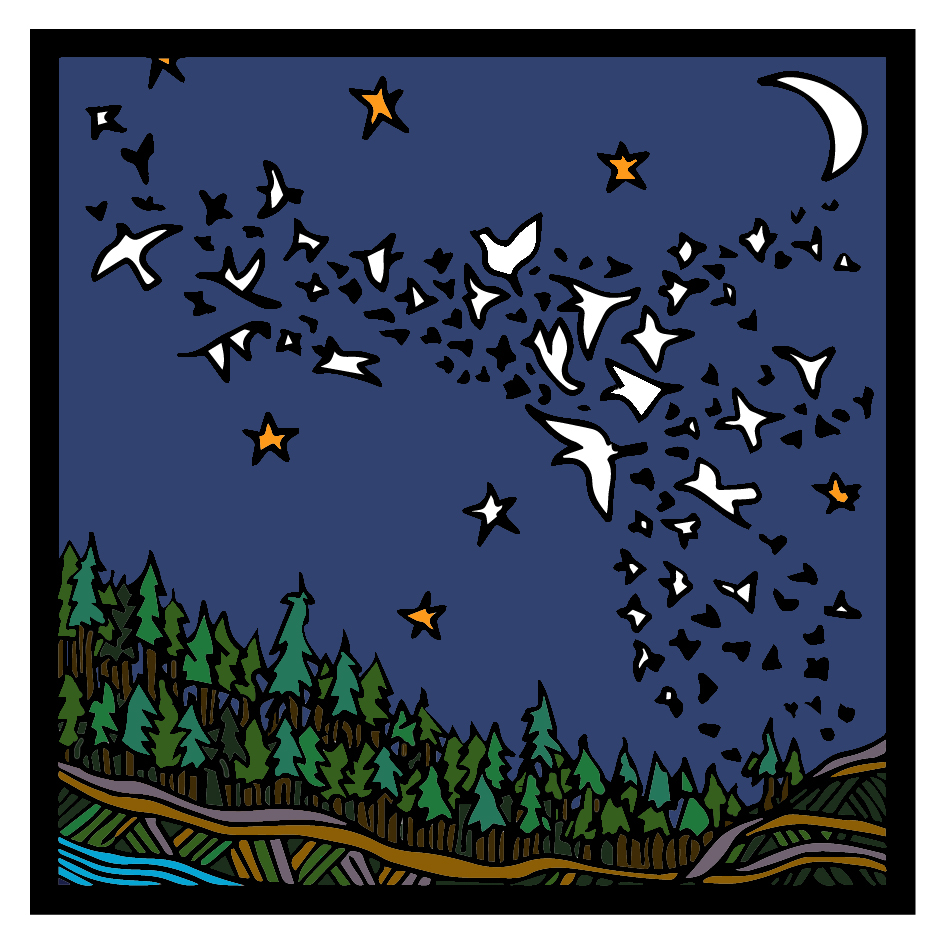
6. The Legend Of The Milky Way (Baltic – Estonia)
This story from Estonia describes how the amazing milky white group of stars we call the Milky Way (or bird path in Estonian) came from the adventurous goddess Lindu’s wedding veil, carried by birds.
Estonia is in Northern Europe and is bordered to the North by Finland, to the West by the Baltic Sea (across which lies Sweden), to the South by Latvia and to the East by Russia. It is now an independent country but has been ruled by Denmark, Sweden and the Russian Empire, so many of traditional Estonian stories can also be found in these neighbouring countries. These legends have been passed down through songs – featuring tales of creation of course – but also including tales of battles, journeys and magic.
The most striking example of the culture of ancient Estonians is the rhythmic verse, as well as the aural tradition of folk song where each line is repeated several times with thematic variations. Estonians have one of the biggest collections of folk songs in the world, with written records of about 133,000 folk songs.
The world of the Estonian ancestors turned around the pillar of a tree to which the skies were nailed with the North Star. The Milky Way (Linutee, Bird’s path in Estonian) was a branch of the World Tree. The god of all living things was Taara, and Uku (Lindu’s father) was the god of Thunder or the Sky.
The Northern Lights (also called Aurora Borealis) that feature in this story are a common phenomenon in this part of the world, creating beautiful dancing waves of green and coloured light that have captivated people since time began.
Learn more about Estonian culture and history here
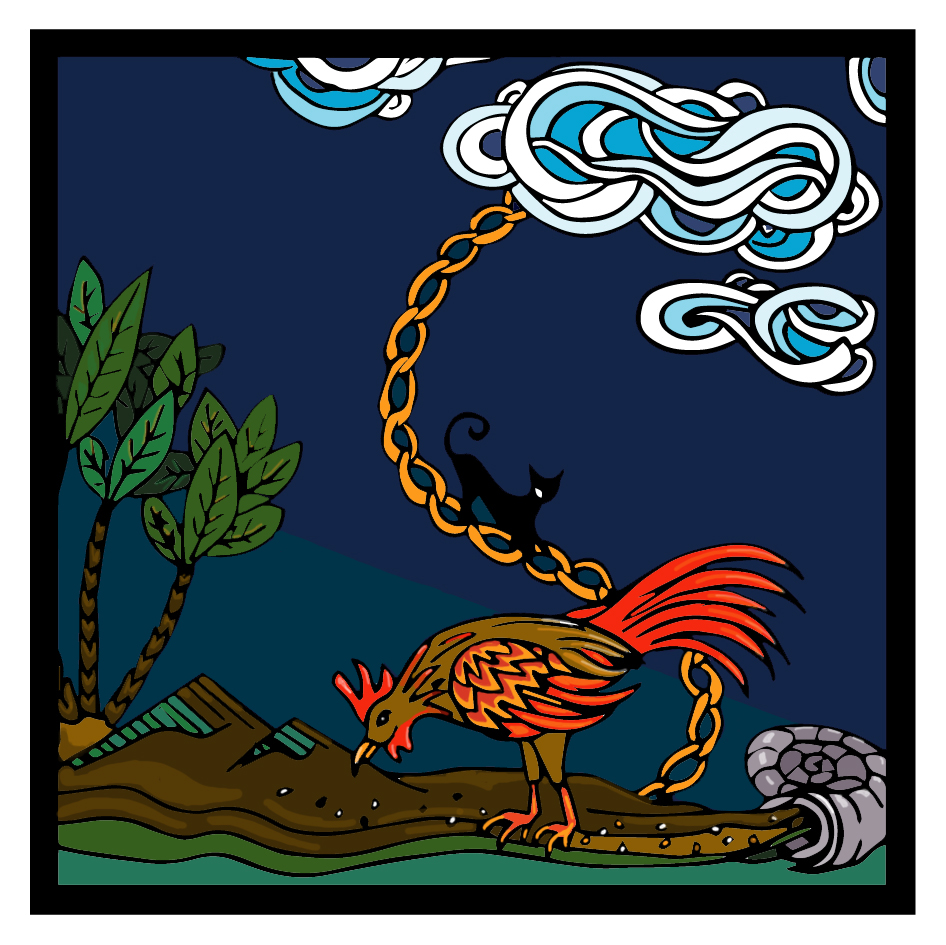
7. The Council of the Orishas (Yoruba – Nigeria, Benin, Togo)
These are two stories from the Yoruba people describing how humans were created; the coming of a great flood; and how Oshun, the goddess of fertility made sure women have a voice.
The Yoruba are an ancient people with roots that date back over 2000 years. They were the rulers of the Oyo Kingdom, a West African Empire covering from what is now West Nigeria to Zaire and Sudan. The main city of Ile-Ife cultivated a great cultural tradition.
Today, there are over two hundred different ethnic groups in Nigeria, each with its own language customs and traditions, and one of the largest groups are the Yoruba who also live in parts of Benin and Togo in Africa. There are Yoruba communities in the Caribbean, South America and North America because of the slave trade and they form the biggest African group in the UK due to migration.
Traditional Yoruba religion has a pantheon of deities (gods) called the Orisha with hundreds of different gods representing natural elements and human emotions, worshipped for many different purposes. Ife is the Yoruba word for Earth and was named by the creator Obatala who also created mankind.
The practice of traditional religion varies from community to community. For example, a deity (god) may be male in one village and female in another. Yoruba traditional religion holds that there is one supreme being and hundreds of Orisha, or minor deities. The worshipers of a deity are referred to as his / her “children.”
The gods featured in this story are Olorun the ruler of the sky and the father of the other gods (The Orishas), Obatala – creator of mankind, Eshu – the messenger god who acts as the link between humans and The Orishas, Olukun – the god of the sea and Orunmila who is the oldest son of Obatala and the god of prophecy. He instructed Obatala on how to create the earth. In the second part of the story we hear about Oshun (Osun) goddess of fertility, honey bees, love, rivers, creativity and passion. She represents the power that women have as givers of life and is still important to women in Yoruba cultures as she represents fertility, femininity and feminine power.
Learn more about Yoruba history and culture in the UK here
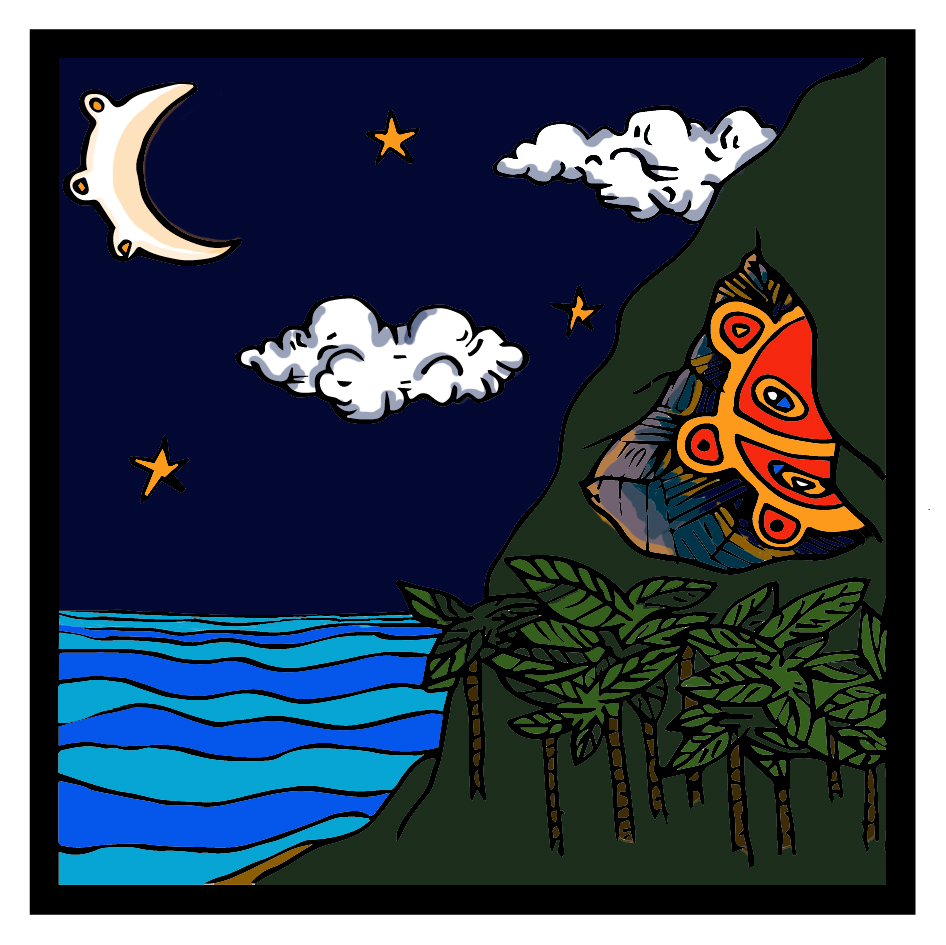
8. Where The Sun And The Moon Came From (Taíno- Cuba)
This story from the Taíno people begins with a great flood forcing everyone to hide in caves, even the Sun and the Moon. This story explains why the Sun and the Moon rise and set at different times.
The Taíno were an Arawak people:the indigenous people of the Caribbean and of Florida. At the time of European contact in the late 15th century, they were the principal inhabitants of most of Cuba, Jamaica, Hispaniola (the Dominican Republic and Haiti) and Puerto Rico.
Taíno towns were described by the Spanish chroniclers who arrived by boat in the 1500’s as densely settled and well organised. They learned to strain cyanide from life-giving yuca, developed pepper gas for warfare, devised an extensive pharmacopeia from nature, built ocean going canoes large enough for more than 100 paddlers and played games with a ball made of rubber, which fascinated Europeans who were seeing the material for the first time. Although the Taíno never developed a written language, they made exquisite pottery, wove intricate belts from dyed cotton and carved enigmatic images from wood, stone, shell and bone. Taíno society was a matrilineal kinship system, with social status passed through the female lines.
Christopher Columbus established the first American colony on the north coast of Hispaniola, in 1494 and after only 50 years of the Spanish settlement very few indigenous people were left due to starvation, slavery, intermarriage and European diseases like smallpox.
Once thought to have completely disappeared there is now “Taíno restoration”; a revival movement for Taíno culture that seeks official recognition of the survival of the Taíno people. In Puerto Rico, the history of the Taíno is being taught in schools and children are encouraged to celebrate the culture and identity of Taíno through dance, costumes and crafts.
The origin of the Sun and Moon story was recorded by the Spanish friar Ramón Pané soon after Christopher Columbus arrived in the Americas (1494). There is some debate as to which Native Caribbean peoples told this particular story, but caves do feature in many stories and are at the heart of Taíno culture. Some villagers in Cuba still keep Taino traditions like praying to the moon and sun for strength and marking the passage of time without clocks or watches.
Learn more about Taíno culture and traditions here
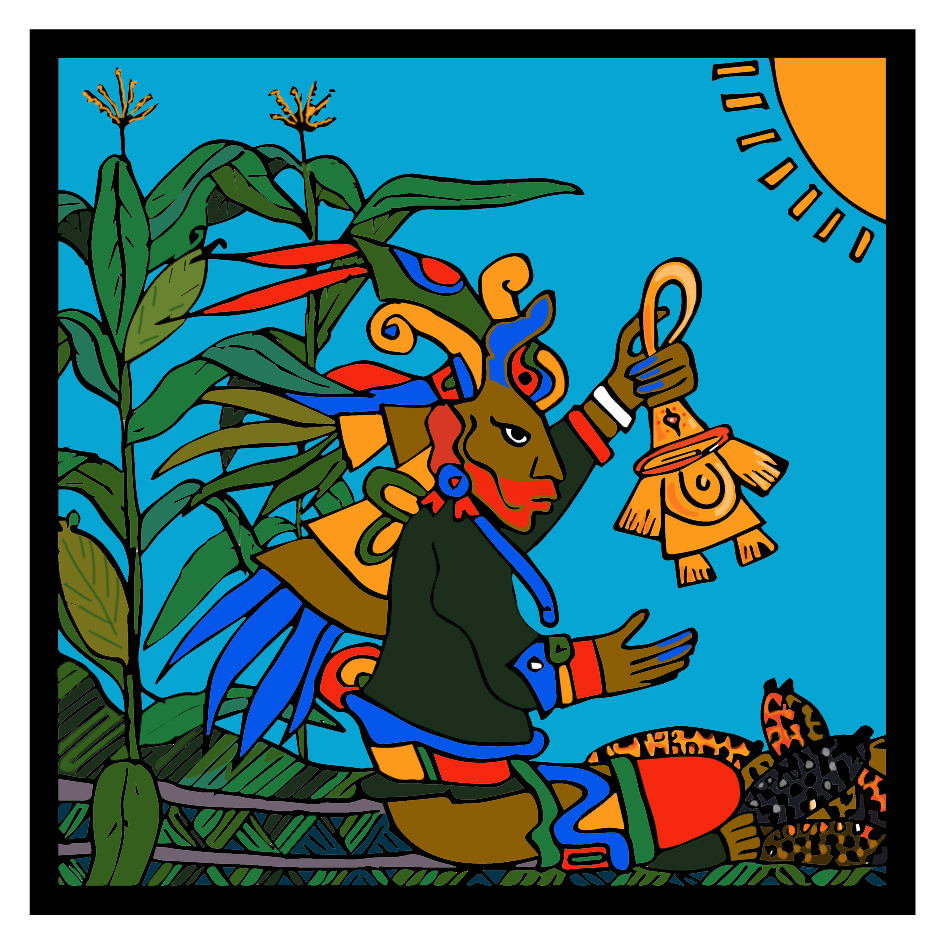
9. The Corn People (Maya – Central America)
This story from the Maya people explains how humans were created out of corn after several attempts using different materials, and how the creator gods Tepeu and Gucumatz made sure that humans did not have constant access to supernatural vision.
Ancient Maya culture once stretched from central Mexico to Honduras and included parts of what is now Guatemala, Belize and El Salvador. More than 40 cities were founded on the Yucátan Peninsula in Mexico and they have now become tourist attractions across this area.
The Maya arrived on the Yucátan peninsula around 2,600 BC and were influenced by the civilisations who lived there before them such as the Olmec and Izapan. Mayan culture expanded quickly as they developed new tools and scientific methods. City-states of between 5,000 and 50,000 people were created with large temples resembling pyramids built to honour the gods, the most famous of these being Chichen Itza.. Archeologists and historians do not know why Mayan civilisation went into decline as it did around 900AD. What remained of Mayan society was mostly destroyed by the Spanish when they arrived in the 1500’s, as they converted most Mayans to Christianity. Today about 7 million people, the majority of whom live in Mexico, call themselves Mayan or say they have Mayan ancestors.
Most of what we know about Maya religion, myth and history comes from a sacred book called The Popol Vuh (Book of Community) which is the most important book of the K’iche Maya of the Guatamalan highlands. It is presented in three parts. Part one talks about the creation of the world and its first inhabitants, part twonarrates the story of the Hero Twins (a couple of semi-gods); and the third part is the story of the Quiché noble family dynasties.
In Maya mythology, Tepeu (The Maker) and Gucumatz (The Feathered Spirit also known as Kukulkan, and as the Aztec’s Quetzalcoatl) are referred to as the Creators, the Makers, and the Forefathers. They were two of the first beings to exist although there were around 150 other gods.
In this story Tapeu and Gucamatz after several attempts, manage to make humans out of corn. This is significant because corn (or maize) is still a very important part of Mayan culture. Maya communities maintain the customs of their ancestors through festivals and ceremonies connected with the growing cycle of corn, and of course corn is still very much a food staple in this part of the world.
Learn more about Maya history and culture here

10. The Arrogance of Fam (Fang/Bantu – Central Africa)
This story from the Fang people is about the creation of the first human, Fam, who was given absolute power. This power went to his head, causing him to destroy the earth and disrespect the other animals that had been created.
The Fang people also known as Fãn or Pahouin are a Bantu ethnic group found in Equatorial Guinea, Norther Gabon and Southern Cameroon in West Central Africa. They speak a Bantu language known as Fang. Those who live in mostly interior rainforest are known to have arrived at their present locations from the Adamawa plains in Northern Cameroon and Nigeria in a great Bantu migration as small groups or families of nomadic agriculturists. The rainforests surrounding the Fang are subjected to slash and burn techniques combined with crop rotation to yield agricultural products. By moving crops from year to year, erosion and soil depletion is avoided. The main crops grown are plantain and manioc.
The Fang people were victims of the large transatlantic and trans-Saharan slave trade between the 16th and 19th century. They were stereotyped as cannibals by slave traders and missionaries, possibly because of the human skulls and bones kept in the open or in wooden boxes near their villages. Later, anthropologists discovered that the Fang people were not cannibalistic: the human bones were of their ancestors, and were a method of routine remembrance and religious reverence for their dead loved ones.
In this story we hear about the Fang’s supreme god Mebere, the creator of the known world. Mebere was one god with three different aspects: Nzame, Mbere, and Nkwa. These three parts consulted with one another during the creation process and particularly in the creation of the first man. This first creation was named Fam and was given gifts from each aspect of Mebere, receiving strength from Nzame, leadership from Mbere, and beauty from Nkwa. After Fam abuses his power and the earth is destroyed, Nzame rejuvenates the earth and creates a new human called Sekume who creates a woman from a tree and calls her Mbonwe. They were made with a body (Gnol) and soul (Nissim). When the body dies the soul lives forever.
This story reflects the importance of looking after our environment, especially the equatorial rainforests where the Fang live that are abundant in natural resources such as timber, diamonds, oil and calton (used in phones) as well as palm oil plantations which are also a growing threat.
Learn more about the Fang and their culture here
Do you know any creation stories or primal myths that you would like to share from your culture? We are always searching for new stories to share.